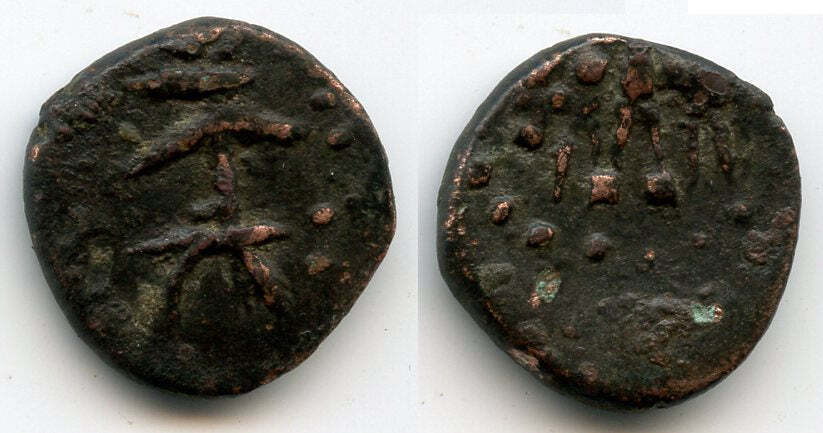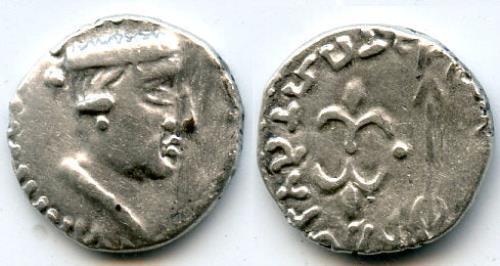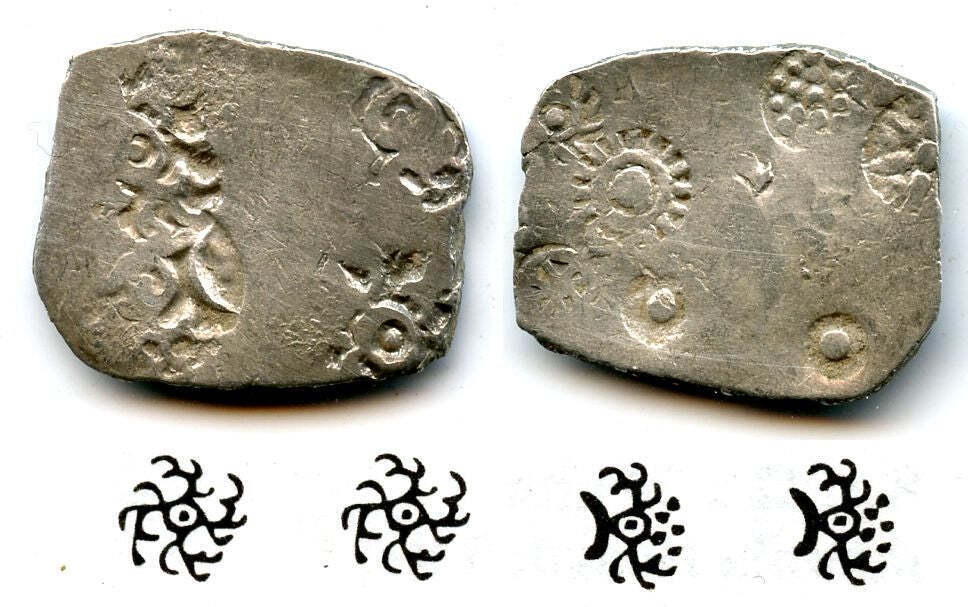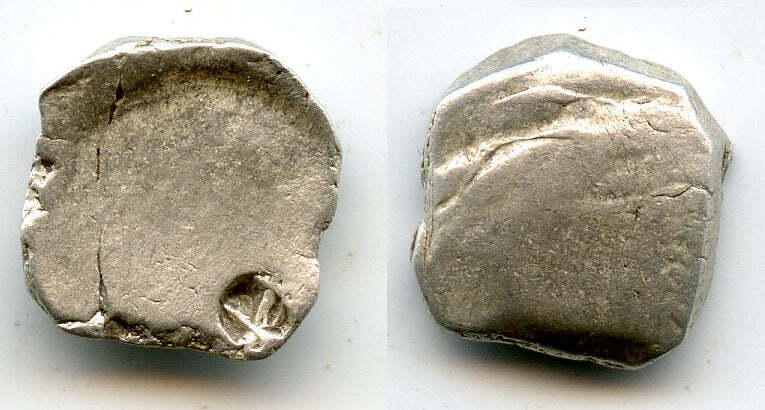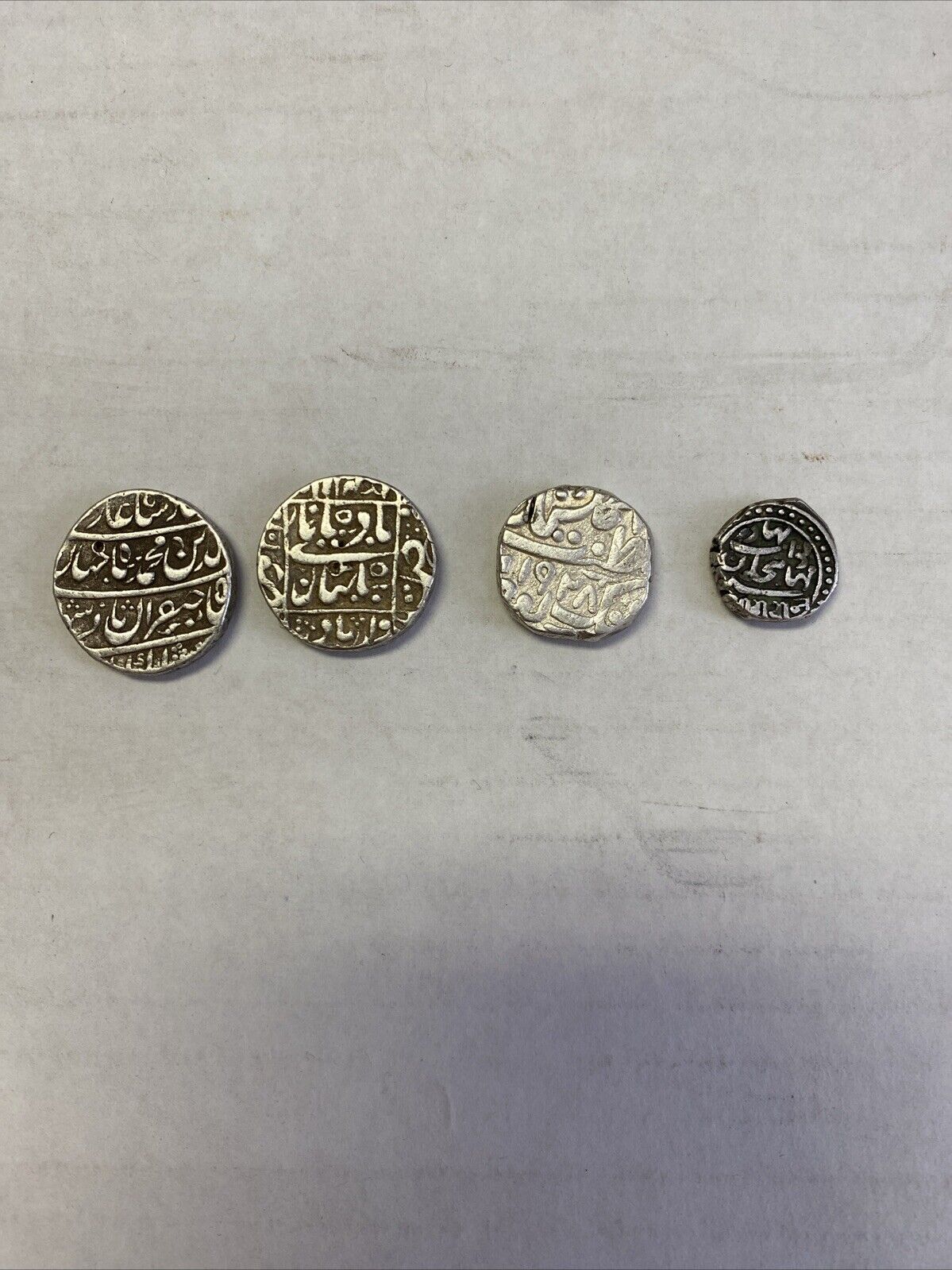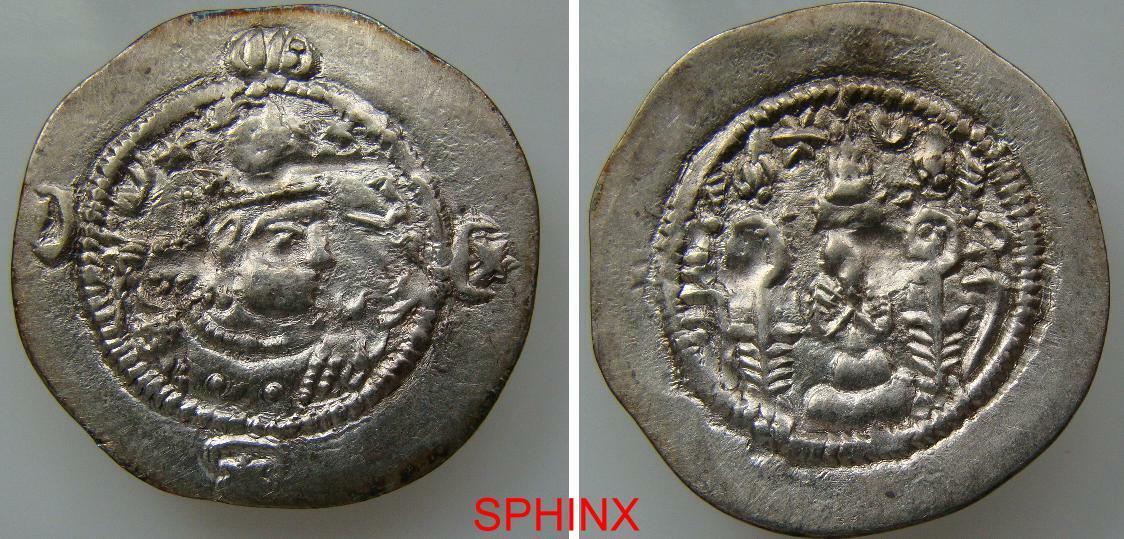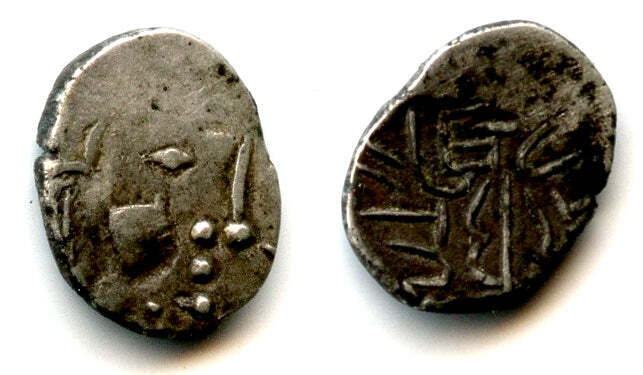-40%
Bronze stater, Kidarite Principality of the Kota Kula in the Punjab (360-460 AD)
$ 10.53
- Description
- Size Guide
Description
Very stylized Shiva and bull. / Kota symbol; wheel with four spokes toleft, trident to right. 18mm, 4.76 grams. Gobl Hunnen Em. 179, Mitchiner ACW 3680.The Kidarite were a dynasty of the "Ki" clan, probably originating from the Uar people. They were part of the complex ian-speaking tribes known collectively as Xionites or "Hunas". They are supposed to have arrived in Bactria with the great migrations of the second half of the 4th century. The Kidarite kingdom was created either in the second half of the 4th century, or in the twenties of the 5th century. They may have risen to power during the 420s in Northern Afghanistan before conquering Peshawar and part of northwest India, then turning north to conquer Sogdiana in the 440s, before being cut from their Bactrian nomadic roots by the rise of the Hephthalites in the 450s. Many small Kidarite kingdoms seems to have survived in northwest India up to the conquest by the Hephthalites during the last quarter of the 5th century are known through their coinage, the coins of the Kota "Clan" (Kota-Kula) are among such coins.
On Sep 27, 2022 at 12:02:49 PDT, seller added the following information:
